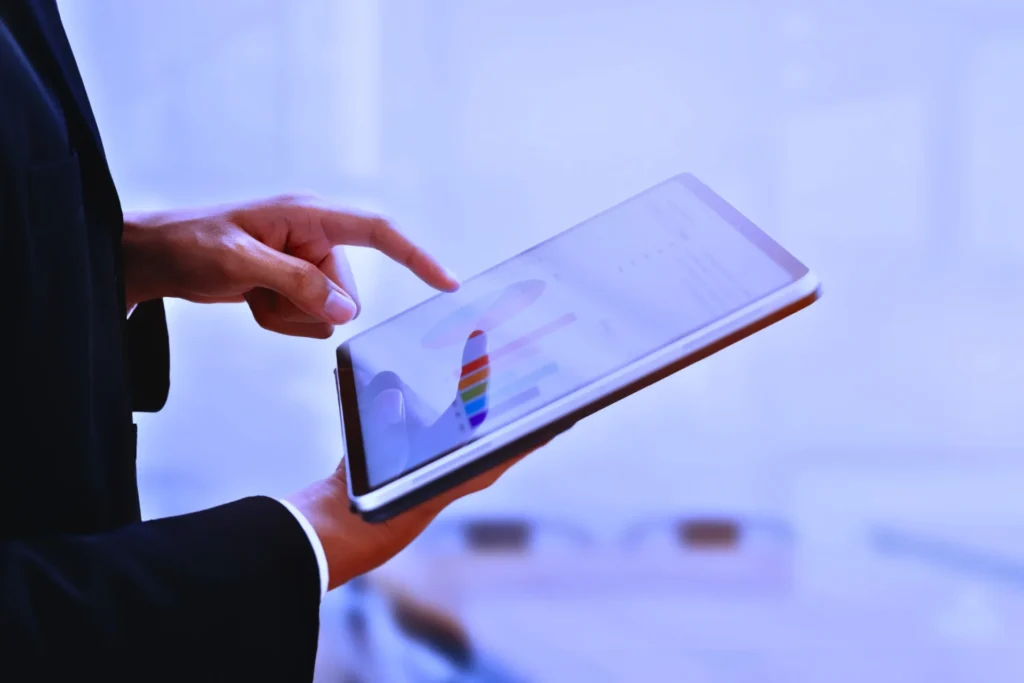In today’s fast-paced digital world, where user attention spans are shorter than ever, creating exceptional digital experiences is no longer a luxury, it’s a necessity. At fishbat, a digital marketing agency with over 10 years of experience in website design and development, we’ve seen firsthand how UX vs. UI design plays a crucial role in driving user engagement, conversions, and overall brand success. But for those new to the world of web design, the distinction between UX and UI might seem a little blurry.
Fear not! This comprehensive guide will break down the key differences between UX and UI design, explore their synergy in the design process, and delve into the future trends that are shaping the digital landscape. Buckle up and get ready to unlock the secrets of crafting seamless and user-friendly digital experiences!
Understanding the Basics of UX vs. UI
Understanding the difference between UX and UI is crucial for grasping how both contribute to effective design. Picture entering a beautifully decorated store only to find it’s confusing and hard to navigate—this scenario highlights the relationship between the two. UI design focuses on the store’s appearance (the décor), while UX design addresses how easy it is to navigate and find what you need. In essence, UI ensures the store looks great, while UX makes sure it works well for the visitor, creating a seamless experience from entry to exit.
UX design is all about the user’s experience, ensuring the digital product is intuitive, efficient, and enjoyable according to a top digital marketing agency. UX designers start with understanding user needs through research methods like surveys and interviews. They build a clear information architecture, crafting the website’s or app’s structure to make it easy for users to navigate. UX also involves interaction design, where designers refine the flow of user actions, ensuring every interaction—from clicking buttons to filling forms—feels natural. Prototyping and testing with real users are crucial to refine the design before it’s fully developed.
On the other hand, UI design focuses on the visual aspects that bring the UX to life. It includes everything from selecting typography and color palettes to organizing the screen layout in a way that guides users effortlessly. UI designers ensure that the interface is not only visually pleasing but also aligned with the branding. By using familiar interface patterns and applying best practices, UI design makes the digital environment welcoming and functional. While UX and UI are distinct, they work together to create a product that looks good and feels right for users.
How UX and UI Work Together
UX and UI work together much like a chef and a sous-chef collaborate in the kitchen. The UX designer, like the chef, focuses on the overall experience—ensuring the dish has the right taste, texture, and presentation for an enjoyable meal. Meanwhile, the UI designer, much like the sous-chef, adds the finishing touches, making sure the visual appeal draws in the diner. This seamless collaboration between UX and UI is essential for creating digital products that are both functional and visually engaging.
The process starts with user research and analysis led by the UX designer. Through thorough research, they gain insights into the target audience’s needs, goals, and pain points, which is then shared with UI designers to shape the product’s visual elements accordingly. Next, information architecture and user flows are established, mapping out the user’s journey. The UI designer translates these blueprints into a visually appealing layout that complements the user’s interactions.
Finally, both designers participate in prototyping and testing, refining the design iteratively. While the UX designer tests usability, the UI designer ensures the prototype maintains the brand’s visual identity. This collaborative, iterative design process allows them to continuously improve the product based on feedback, ensuring it meets both user needs and business objectives. Through this teamwork, UX and UI deliver a product that balances both aesthetic appeal and user-friendliness.

The Impact of UX and UI Design
In today’s highly competitive digital world, businesses that prioritize UX and UI design gain a significant advantage. A well-designed digital product doesn’t just look good; it enhances user satisfaction, boosts brand reputation, and drives higher revenue. Companies that invest in these areas stand out by providing users with seamless, enjoyable experiences that keep them coming back.
Increased user satisfaction is one of the biggest benefits of strong UX and UI design. When users find a product easy to navigate and visually appealing, they are more likely to become repeat customers. Loyalty is built through positive experiences, and an intuitive interface can significantly enhance how users feel about your brand. Additionally, a well-designed product also strengthens your brand reputation, showing your audience that you value quality, innovation, and user-centricity.
Beyond user satisfaction, good design impacts business performance directly. For example, higher conversion rates and sales are often linked to a seamless user experience, where purchasing, signing up, or completing tasks is made effortless. Moreover, investing in UX and UI design early on helps reduce development costs by addressing usability issues before they become expensive problems. This proactive approach saves time and resources, preventing costly redesigns or bug fixes later in the process.
Measuring the Success of UX and UI Design
Measuring the success of UX and UI design is crucial for understanding how well your design efforts are performing. By tracking key metrics and gathering feedback, you can ensure that your product delivers the best possible experience. Monitoring key performance indicators (KPIs) such as conversion rates, bounce rates, and time spent on site can give you valuable insights into how your design choices are impacting user engagement and business goals.
Another effective method is through user testing and feedback. Conducting usability tests allows you to see firsthand how users interact with your product and identify any pain points. Gathering direct feedback from users also highlights areas for improvement, ensuring that future design iterations are more aligned with their needs. This ongoing process of testing and refining is essential for delivering a user-friendly experience.
Finally, leveraging analytics and data-driven insights helps you track user behavior over time. By analyzing this data, you can detect patterns that may indicate design flaws or opportunities for optimization. This approach ensures that your decisions are backed by solid evidence, allowing you to continuously improve the user experience. Regularly monitoring these metrics enables you to refine your UX and UI design strategies for maximum impact. Additionally, incorporating online reputation management practices by monitoring user reviews and feedback across digital platforms helps to ensure that the design remains positively received and aligned with customer expectations.
The Future of UX and UI Design
The future of UX and UI design is evolving rapidly, shaped by new technologies and shifting user expectations. To stay competitive, designers must embrace emerging trends that are revolutionizing how users interact with digital products. These changes are driving innovation in the design space, and adapting to them is essential for creating cutting-edge user experiences.
One of the most transformative trends is the rise of artificial intelligence (AI) and machine learning (ML). These technologies are enabling features like intelligent chatbots, personalized recommendations, and predictive interfaces that anticipate user needs. Additionally, voice and gesture-based interfaces are becoming more common, with voice assistants like Siri and Alexa and emerging gesture-controlled devices creating more natural ways for users to interact with technology. Augmented reality (AR) and virtual reality (VR) are also expanding the possibilities for immersive, interactive experiences that blur the line between digital and physical environments.
Another key trend shaping the future of UX and UI is the use of design systems and component libraries. These systems provide reusable design elements that ensure consistency and streamline the design process, making it more efficient. As technology advances, designers must also prioritize ethics, considering issues such as accessibility, privacy, and inclusivity in their work. By designing with empathy and purpose, we can create digital experiences that are not only innovative and engaging but also contribute to a more equitable and sustainable future.
Wrap Up
In today’s digital landscape, UX and UI design are more important than ever for ensuring that users have seamless, enjoyable interactions with your products. By prioritizing both user experience and interface design, businesses can not only meet but exceed customer expectations. Whether it’s through intuitive navigation, visually appealing layouts, or responsive design, a strong UX and UI approach can differentiate your brand and foster lasting user loyalty. This combination of functionality and aesthetics is what drives customer satisfaction and ultimately contributes to business success.
At fishbat, a top digital marketing agency in New York, we bring over a decade of experience in crafting innovative and user-centric digital products. Our expertise helps brands create seamless, engaging experiences that elevate their digital presence. If you’re ready to take your brand to the next level. Contact us today at 855-347-4228 or hello@fishbat.com for a free consultation, and let us help you transform your digital strategy with expert UX and UI design solutions!


